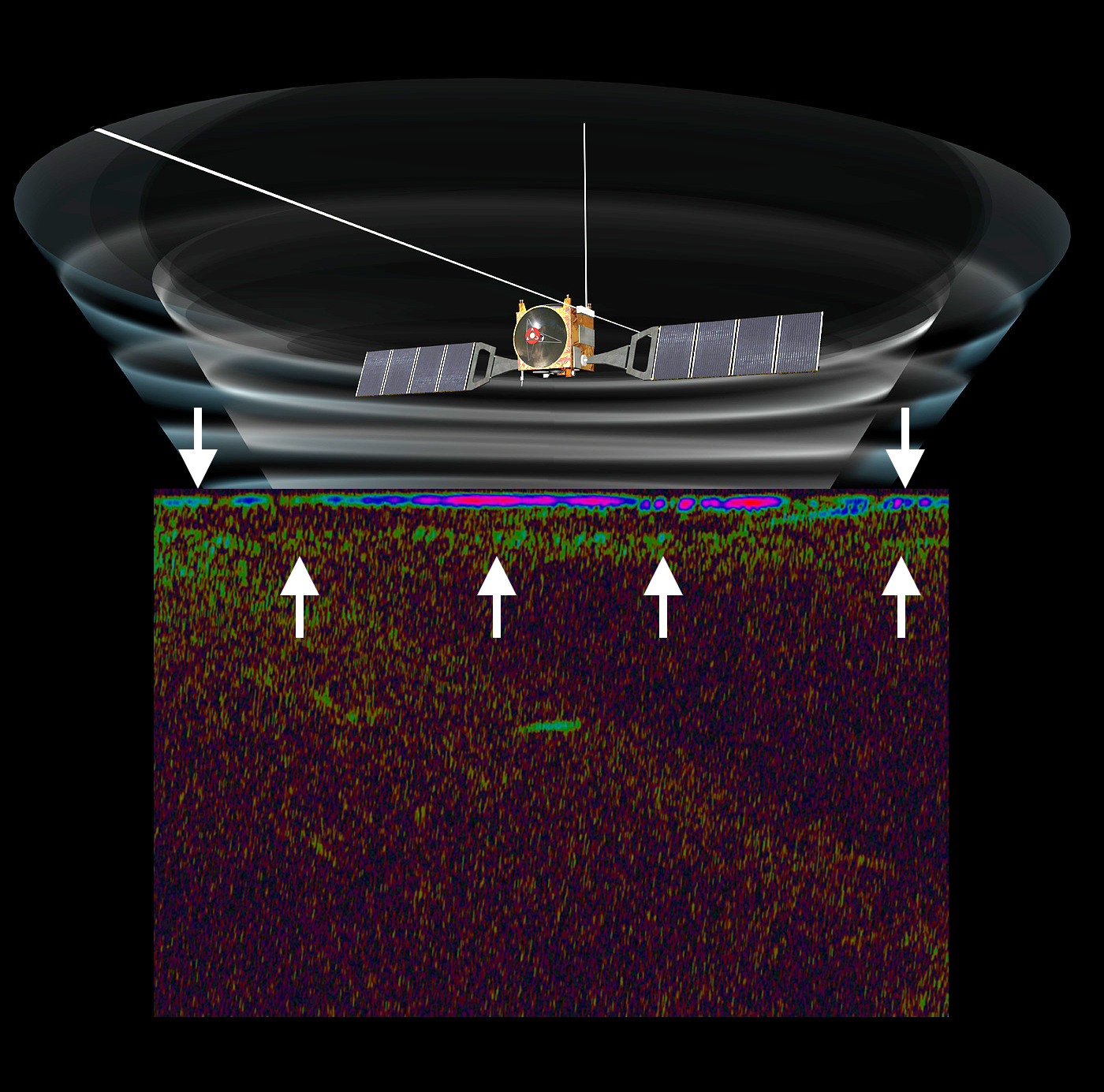Frozen Lakes on Mars
Written by Phyllis Shen
In 2018, researchers discovered a frozen saltwater lake beneath the south pole of Mars, suggesting the possibility of life on the planet, as microbes thrive in similar environments within glaciers on Earth (Witze 2018). This discovery was made by a team of scientists in Italy through the European Space Agency’s Mars Express spacecraft. Similar research has been conducted on Jupiter’s moon Europa to study water buried under its surface, but scientists have not yet had the chance to drill the ice on Mars until now. However, in the past, scientists have been able to detect ice on Mars deposited at the bottom of steep slopes from the dark marks running alongside the slopes. These studies suggest that the water found outside of Earth are remnants of when the temperature on Mars was warmer a few billion years ago, allowing the water to formerly exist in its liquid form.
Roberto Orosei, a planetary scientist at the National Institute of Astrophysics in Bologna, Italy, used Mars Advanced Radar for Subsurface and Ionosphere Sounding (MARSIS), a radar technology, to use radio waves to detect ice under the surface of Mars in 2003. MARSIS sends these waves towards the surface of the planet and records data regarding the waves that are reflected back from rocks, ice, and other fluid. In 2012, MARSIS sent data back to Earth that suggested the ice caps contained saltwater in them. This discovery, combined with the potentially ideal energy supplied by the Sun, would suggest the possibility of martian life.

Marsis uses radio waves to detect the possibility of ice under Mars’ surface. (Smithsonian Institution 2017).
By September of 2020, scientists have discovered three additional lakes surrounding the previously discovered body of water from 2018 (O’Callaghan 2020). While the low atmospheric pressure on Mars makes the presence of liquid water unlikely, the high concentrations of salt in these reservoirs increases the chance of finding liquid water, as saltwater has a lower freezing point than freshwater. In addition, the heat generated by Mars’s core makes it more likely to find liquid water deep under Mars’s surface. The concentration of the salt in Mars’s lakes is twenty times higher than seawater on Earth. This concentration is four times higher than the highest concentration that is able to support life.
Because of this, the existence of martian life is still widely disputed among planetary scientists. There are many factors that contribute to the possibility of life on Mars, and the interpretation of the data collected on each factor differs among researchers. While martian life has not yet been discovered, scientists continue to gather data and develop their understanding of microbial life in order to prove or disprove the existence of extraterrestrial life.
References
Witze, Alexandra. “There’s Water on Mars! Signs of Buried Lake Tantalize Scientists.” Nature News, Nature Publishing Group, 25 July 2018, www.nature.com/articles/d41586-018-05795-6.
O’Callaghan, Jonathan. “Water on Mars: Discovery of Three Buried Lakes Intrigues Scientists.” Nature News, Nature Publishing Group, 28 Sept. 2020, www.nature.com/articles/d41586-020-02751-1.
MARSIS Radar Sounder Instrument. (2017). Smithsonian Institution. https://www.si.edu/newsdesk/photos/marsis-radar-sounder-instrument.